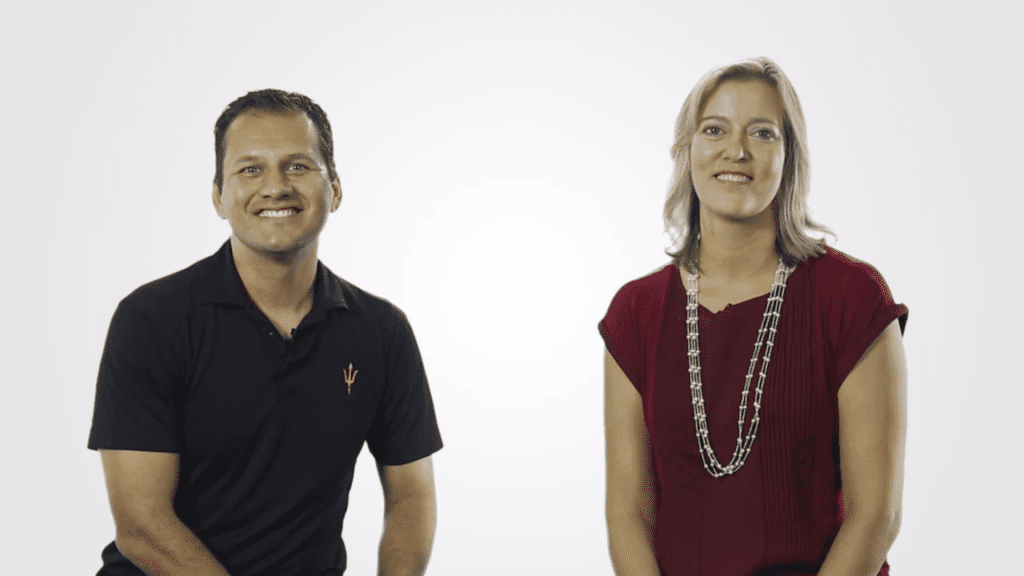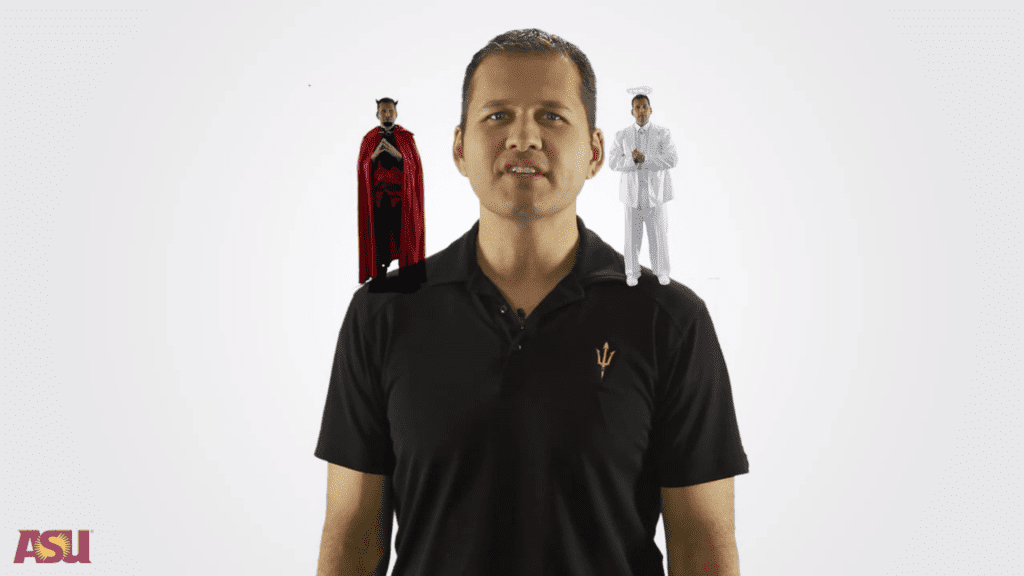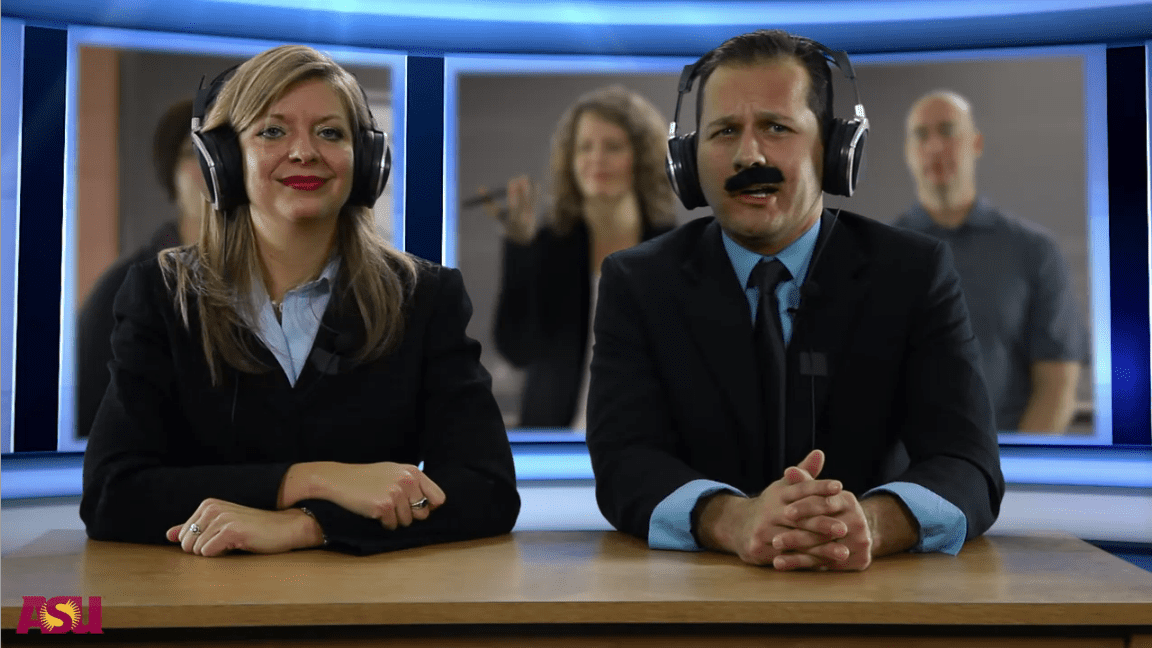Can You Get a Legitimate, Fully Online TESOL Certificate?
An in-depth review of ASU’s Online TESOL Professional Certificate, course by course.
A few years ago, when I worked at the front desk of a hostel, I spent much of my days supporting English as Second Language learners with the idiosyncrasies of working and living in English. I loved sharing my native language, but also, I loved understanding the nuances of different cultures and language speakers struggled with.
It seemed a logical jump, for me, to get my Teaching English as a Second Language (TESOL) Certificate. I’d already worked as a digital nomad for close to five years, and I wanted to open myself up to new ways of earning a living. But I also knew that chaining myself to one location for a course wasn’t appealing; I wanted an online TESOL. I had no idea if it was possible.
It took another two years of casual searching to find, what I felt was, a legitimate teaching program with an accredited university in a country that normally speaks English as a first language. (I found close to 100, let’s say, not legitimate online TESOL certificates, but let’s not waste any time with those).
The Arizona State University (ASU) TESOL certificate felt like a breath of fresh air to me. 300 hours? Check. Legitimate school? Check. Inexpensive with an option for scholarships? Check.
With every check mark, I was more and more convinced that, yes, I could get an online TESOL certificate. But, I had no idea if I’d actually enjoy the course, the instructors, or the act of formally teaching English. At the time, I’d wished for a review (sort of like this one) to support my decision, or at least one that felt truthful and forthcoming enough that I could make an informed decision with.
I’ve endeavored to share my likes, dislikes and caveats with each of the courses in this Certificate program. If you feel I’ve missed something crucial, or have a question, please comment and I’ll do my best to answer.
The ASU Online TESOL Professional Certificate Program
Offered by Coursera, the ASU TESOL Certificate Program offers two pathway to get certified. Both offer the same programming and courses, they’re essentially identical. When I started the TESOL, you could only pick the following pathway:
- TESOL Certificate, Part I: Teach English Now! Specialization (composed of four courses)
- TESOL Certificate, Part II: Teach English Now! Specialization (composed of four courses)
- Teach English Now! Teaching Language Online (one course)
- Application to ASU for your certificate, once you finished all nine courses, including two capstones.
While that original four-step program still exists, ASU has clarified and streamlined the requirements, as well as removed the Teaching Language Online course from the certification.
This second, and recommended pathway comprises eight courses, taken in any order (but recommended taking in the order listed):
Arizona State University TESOL Professional Certificate (Select from the list below to jump straight to that course. Note: not all courses have been reviewed yet.)
- Teach English Now! Foundational Principles
- Teach English Now! Theories of Second Language Acquisition
- Teach English Now! Lesson Design and Assessment
- Teach English Now! Capstone Project I
- Teach English Now! Reading, Writing and Grammar
- Teach English Now! Second Language Listening, Speaking and Pronunciation
- Teach English Now! Technology Enriched Teaching
- Teach English Now! Capstone Project II
I will review each course in this order, although to note I haven’t taken the courses in order, because they were in a completely different order when I started. Or maybe I got discombobulated and registered in the wrong courses first. I can’t remember. As I finish a course, I’ll update and add to this TESOL Certificate review.
Teach English Now! Foundational Principles

I’m unsure what I expected from a foundational course, but it wasn’t this. In fact, this course was so exceptional and well thought out, it changed my worldview about teaching. Not just TESOL, but teaching anything – workshops, presentations, learning another language myself, showing my kids how to tie a shoe, everything. I wish I’d taken this course decades ago, prior to starting my business and working as an entrepreneurship educator.
Foundational Principles practices what it preaches. The course offers unforgettable devices to help you truly learn, not just memorize, the foundations of what it means to teach English as a second language. Well, really, to teach anything and help your student retain what they’ve learned. It’s a bit meta, and I loved it.
Like most of the classes in this specialization, there are peer reviews. I struggled with the peer reviews, in part because of the way Coursera processes them, and in part because 80% of my fellow students weren’t native English speakers.
Tip: if you’re waiting more than a few days to have an assignment peer reviewed, head to the Forums and post your request there, along with a direct link to your assignment. Then, review other people’s assignments for that week’s work. You’ll find this speeds up turnaround time from what can take months to days.
That most of the students aren’t native English speakers became a plus for me. This shows the course offers more than just TESOL teaching knowledge, but opportunities for people learning any language, anywhere. My frustrations circled around reviews I couldn’t finish, as much as I wanted to, because I couldn’t understand what the student tried to say. No fault of the course, but something to know before taking it.
While I had no issue with the lead instructor, Shane, quite a few Coursera reviews negatively mention his sense of humor. I’ll admit he’s not what I expected – he’s got energy for days and sometimes what’s intended as a joke doesn’t translate well. But, I learned so much from him, there’s no way I would have enjoyed this class as much without him at the helm.
There’s only one big complaint that I have about this (and all the other courses in this specialization that I’ve taken so far): the test questions need updating. Some questions aren’t covered in the course, or don’t match what’s taught. Trying to figure out where to find the correct information to pass the quizzes took more time than the course itself.
Teach English Now! Theories of Second Language Acquisition

An exceptional course; one of the best I’ve taken.
Well laid out and interesting, full of information any teacher (language or otherwise) will find useful.
You’ll learn about the different schools of thought around teaching language, and how to compare, contrast and/or combine different methods to form your own personal style. Like in the Foundations course, the instructors practice what they preach; Shawn re-enacts well-known language theory personas, as if they were sitting in front of you on the computer, having a Skype chat.
Some comments on Coursera found some of the reenactments in poor taste, and I can understand why if they didn’t understand the purpose of the materials. Nutshell, the instructors tried their hand at acting, pretending to be the people we learned about, as if we were students in a TESOL version of Bill & Ted’s Excellent Adventure (so, time travel to learn directly from these people we study).
Unfortunately, sometimes the time periods weren’t… Let’s say sensitive to women in education, or those not seated in the upper class. While it can seem a bit off today, it’s a fair assessment of how things were – when learning history, it’s not always great or admirable. I suspect, as with the other courses in this series, many of the learners are teaching languages other than English, and the ‘acting’ doesn’t translate well.
Some things to note:
The course isn’t updated often, and some quiz questions just don’t match the curriculum. If in doubt, head to the forums.
Most learners in my cohort were not native English speakers. I loved that the course offers this flexibility, even though it’s called TESOL. However, it made some peer reviews tricky, going both ways.
On the subject of peer review… Coursera needs to figure out a new system for peer review, as I had to beg in the forums every week to find people to review my work so I could pass the course within the time frame I had. But, that’s no fault of the instructors, just something to know.
Teach English Now! Teaching Language Online

When I started this course, it took me over a year to finish it. I had the very best intentions, but life got in the way and I completely forgot about it. By the time I returned, it was no longer required for the TESOL certificate program through ASU, but I felt it would help my teaching skills, so I re-enrolled.
Of the courses I’ve taken in this specialization, I felt this one the weakest, mostly due to quality control issues. The presentations were solid, the information useful, however quiz questions were incorrect, or contraindicated the materials shared in the course. It made for a slog to get through to the end, to the point of where I had to resort to reviewing other Learner’s feedback in the Forums, and used their feedback to get me through the course. I ended up with 99.26%, so I must have done something right.
I should note, this class assumes prior TESOL certification, in that it only briefly covers things like lesson plan formation – and only in the context of online learning and teaching. Quite a few reviews on Coursera mention this; I wish I’d known prior as I’d have taken this course later on in my TESOL certification journey. No fault of the course or instructors, though! I just wish this was more clearly explained in the overview you read over before signing up.
The stand-out information revolved around Task-Based Language Teaching, and it transformed how I teach (and learn!) a second language. The only complaint I can think of regarding the course materials was the first week’s work; if you’ve learned anything online, this is probably review, but it was helpful and interesting nonetheless.
Teach English Now! Lesson Design and Assessment

Of all the courses in this TESOL specialization so far, this was the most challenging. I also found it rewarding (and a bit meta, again) to work through this course about Lesson Design and Assessment while creating my own lesson plan.
Did I finish a lesson plan in its entirety? You betcha, and I’m quite proud of it. The course took what felt like a Herculean task, and broke it down into bites-sited, manageable pieces. I ended up energized, and wanting to teach a class with the plan I’d just created.
Luckily for me, that’s the first Capstone Project in this program, and up next.
Week one covers basic instructional design theory, where you review lesson plan structure (including an excellent template) and classroom management. I’ll be honest – I didn’t watch the videos, but rather read through the transcripts and took notes from there. I found this easier to grasp essential concepts, but that’s me.
Week two covers lesson objectives and warm-ups, focusing on skills and knowledge the students already know, and using that to build upon. I found this week exceptional, although I had to reevaluate my objectives later on as I worked through the course. Since each week requires a peer review of your classmates’ lesson plans, it took little for me to realize we all had to edit as we learned more about instructional design best practices. I should also note that while the previous courses seemed mostly composed of English as a Second Language learners/teachers, this course seemed to switch to mostly native English speakers. I also noticed in week two that my classmates were mostly experienced TESOL teachers, whereas in previous classes they were almost all as inexperienced as I was.
Week three covers learning models, “sticky learning”, and “when to shut up”. While some of this content links to past courses in this TESOL program, it gets rounded out nicely here and put into practice. Albeit, the language used to explain concepts surprised me; this isn’t the language I’d normally use in a classroom, unless perhaps when explaining slang. “When to shut up” got my attention and definitely stuck with me, but I’m not sure it was for the best reasons.
Weeks four and five cover independent practice, assessments and the concept of alignment within lesson objectives, lesson plans, and outcomes.
Courses I have yet to finish:
Teach English Now! Capstone Project 1
Teach English Now! Reading, Writing and Grammar
Teach English Now! Second Language Listening, Speaking and Pronunciation
Teach English Now! Technology Enriched Teaching
Teach English Now! Capstone Project 2
As I finish a course, I’ll continue to update this article







Cristina Stern
Hi Bonny,
I loved your article on ASU’s TESOL Certification Program. I also took it and received my Certificate in August 2021. I truly enjoyed the courses and the professors, they are so good at what they do. As you take the courses you begin to realize that they are teaching and practicing what they teach. Lesson Planning is not easy if you want to
be effective and they really help you get the importance of organizing your material with language acquisition always at the forefront. I can’t tell you how helpful these classes were. Most schools don’t know how to teach lesson planning, they skim over it and treat it like a fill in the blanks exercise but Shane, Jessica, and Justin really communicate the importance and value of preparation.
Your article really did them justice. I didn’t mind Dr. Shane Dixon’s humor at all.
After all, it’s so hard to be funny when you have no real audience. He uses metaphor so brilliantly.
Thank you for doing this program justice.
Sincerely,
Cristina Stern